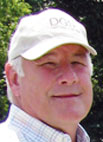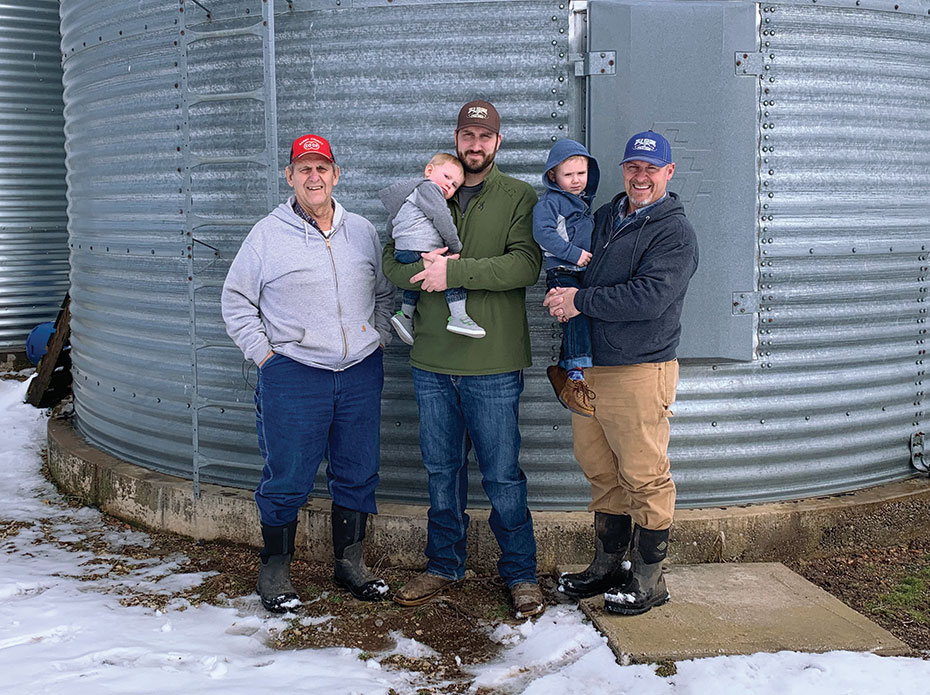 Denis Turner has been raising replacement heifers on his 148-acre farm near Hartville, Mo., in Wright County, since 1994. He explained, “We did a grazing project – a heifer development project – for the University of Missouri here for 2 years. That’s what got me into grazing. There were 10 or 11 dairies that contributed heifers, and at the end of that project, a few of those dairies wanted me to continue raising their animals. That was how I got into it.”
Denis Turner has been raising replacement heifers on his 148-acre farm near Hartville, Mo., in Wright County, since 1994. He explained, “We did a grazing project – a heifer development project – for the University of Missouri here for 2 years. That’s what got me into grazing. There were 10 or 11 dairies that contributed heifers, and at the end of that project, a few of those dairies wanted me to continue raising their animals. That was how I got into it.”
Denis raises replacement heifers for four different Missouri dairies, so he rents an additional 420 acres. “With 600 head of cattle, we’re not at capacity, but we’re fairly full. I think in the right circumstance I could handle 700 to 800 here, because I’m really not pushing myself with 600 as far as pasture goes.”
With approximately 600 heifers year-round, Denis has Holstein, Holstein/Jersey cross, Jersey and Brown Swiss. The breed depends on the dairy. He raises Registered Holsteins for one dairy, Holstein/Jersey crossbreds for another, while yet another has Registered Brown Swiss and Jersey/Swiss cross along with some milking Shorthorns. “The crossbreds are generally considered better grazing animals. These are all grazing dairies, and those animals are usually better at grazing in the hot weather than Holsteins.”
Denis does intensive grazing with the heifers and said, “As a general rule of thumb, you need 20,000 pounds of animal per acre of grass per day. That’s a starting point. Generally you can graze off a piece of ground fast enough with that many pounds of body weight out there, and you’re moving them daily.”
He strives to keep the grass in a vegetative state at its highest quality at all times throughout the growing season. “If we do a good job, the quality of the forage is much higher and we need less grain supplementation to keep them gaining right,” he stated.
Conditions determine how long the cattle remain off an area. Denis explained, “Depending on rainfall and the growing season, in the early spring you may want to graze that area again in 14 to 16 days. As we get into the hot summer, that may extend to 30 to 40 days depending on all kinds of variations and conditions. You have to be flexible.”
Denis said there is no single most important factor when raising replacement heifers. “It’s a culmination. You build one thing on another. If you don’t do some things right, it doesn’t matter what you do after that.”
Nutrition is key to success, and Denis stated, “It needs to be right. Forage quality and quantity need to be right.” Throughout the growing season, he utilizes intensive grazing, and feeds hay in the winter. As for the grazing, he added, “We let the animals do as much of the work as possible. The higher the quality of the forage, the less additional supplementation we have to provide to get those gains.”
Denis does feed the heifers some grain daily. It is “a combination of corn distillers, soy hull pellets, and a little bit of pulverized corn. Then we have vitamins and minerals that go into that.” But grazing is the highlight of the Heifer Haven and Denis’s favorite part of raising dairy replacements. “There’s nothing better than seeing those heifers out grazing in the field.”







